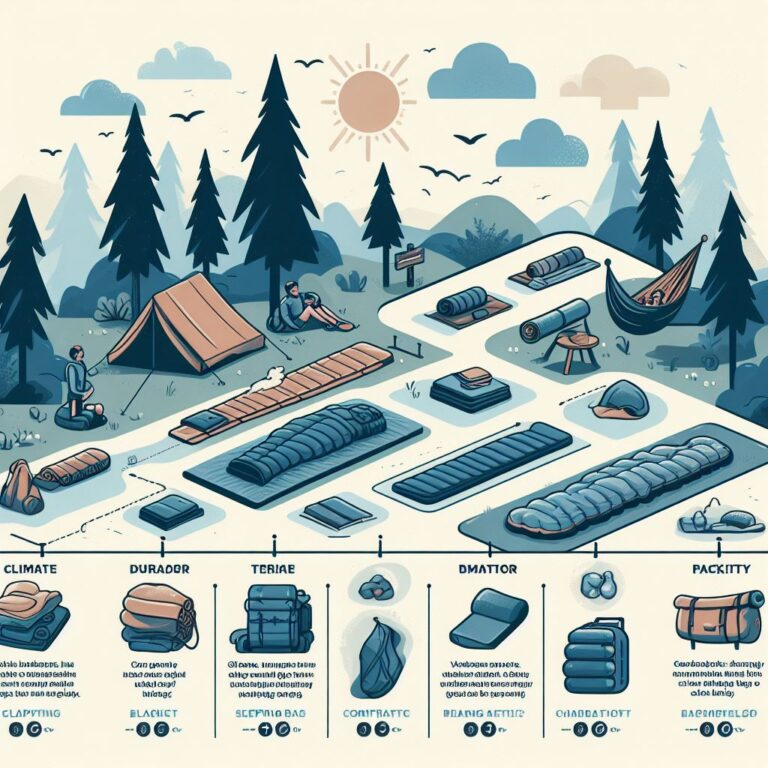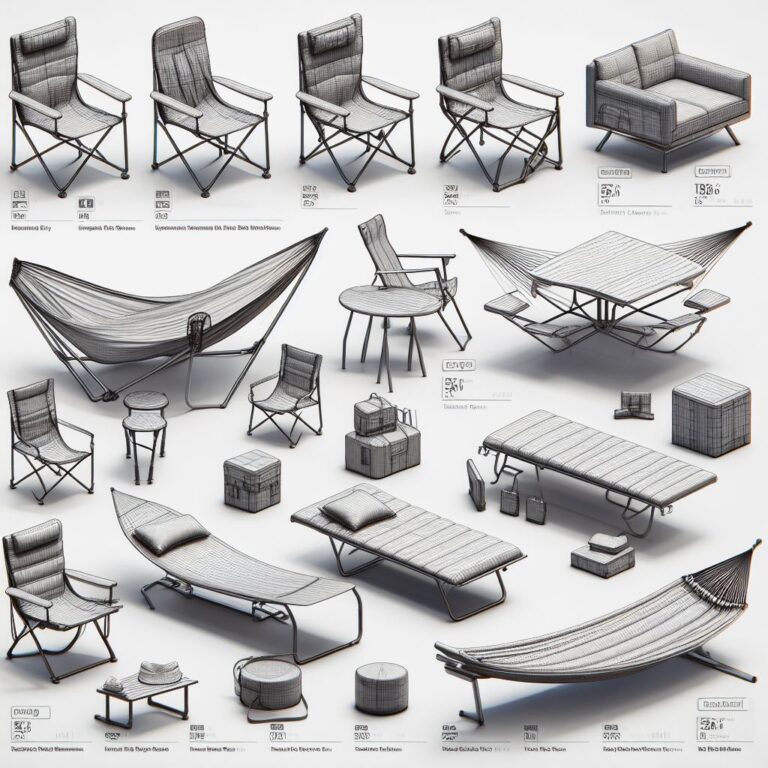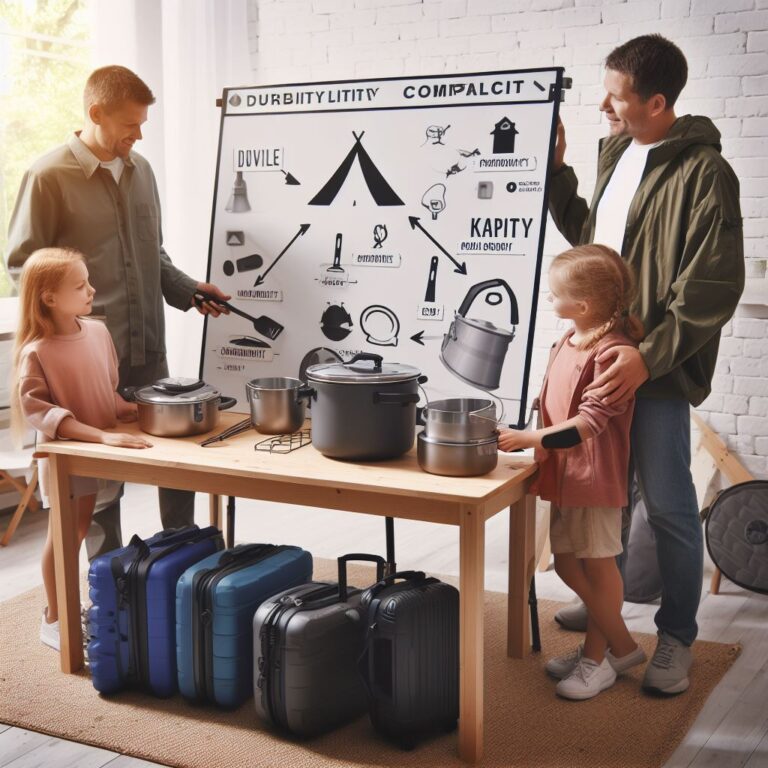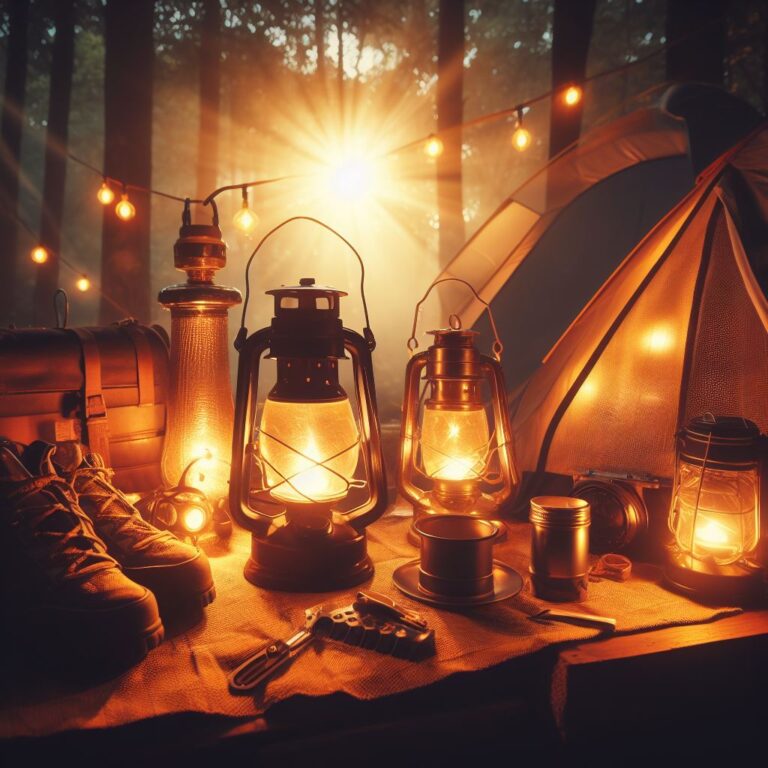Understanding the Different Types of Tents and Shelters
When embarking on outdoor adventures, a suitable shelter is paramount for safety and comfort. There are numerous options available ranging from the traditional camping tents to more advanced pop-up shelters and hammocks. Camping tents come in all shapes and sizes, including dome, tunnel, and multi-room tents. Dome tents are generally lightweight and simple to set up, making them ideal for backpacking or solo camping. For larger groups or families, multi-room tents offer ample space and often come with room dividers for privacy.
Moving beyond the typical tent style, adventurers might consider alternate options such as pop-up shelters and hammocks. Pop-up shelters, as the name suggests, virtually set themselves up, which means less time pitching the tent and more time exploring the wilderness. These are typically designed for quick, short term use. Hammock tents offer an above-ground sleeping option for the true minimalist. These are often more compact and lightweight than traditional tents, providing an elevated sleep experience literally off the ground.
The Importance of Tent and Shelter Size
When you’re gearing up for a camping trip, one of the primary concerns is how many people the tent or shelter can accommodate comfortably. The size of the tent dictates many things, including comfort, privacy, and the amount of gear you can store inside. For example, a solo backpacker would need a one-person tent, while a family of four with plenty of equipment would likely require a six-person tent. Additionally, it’s wise to consider whether the campers will spend the majority of their time in or out of the tent, as this could influence the size choice.
Secondly, size isn’t just about the physical dimensions of the tent or shelter. It’s also about how easy it is to set up and take down, as well as how much it weighs. A larger, heavier tent might provide more comfort and space, but can be more demanding to assemble and harder to transport. Smaller, lightweight alternatives, on the other hand, may be much easier to handle and carry, but might not provide as much comfort or protection from weather. Understanding these trade-offs can help you make an informed decision about the size of the tent or shelter you choose for your camping experience.
Assessing the Weight and Portability of Tents and Accessories
In the realm of camping and outdoor exploration, the weight and portability of tents and accessory equipment remain a paramount concern. A good camping tent should strike a balance between offering ample living space and being lightweight enough to carry around without too much strain. Many modern tents use lightweight materials and minimalist designs to keep the carrying weight low. These include features like aluminum poles and thin fabrics, which significantly reduce the weight without compromising on strength and durability.
At the same time, portability goes hand in hand with weight. A suitable camping tent should not only be lightweight but also compact enough to fit into your backpack. Some tents are designed to break down into small parts that can be distributed among several people. This makes it easier if you are hiking with a group. Furthermore, the portability of accessories like tent stakes, rainflies, and repair kits are also crucial. These items should be small and lightweight enough to pack without consuming too much space or adding substantial weight.
Features to Look for in a Quality Tent
When it comes to purchasing a new tent, careful attention to specific features can significantly improve overall camping experiences. High on the priority list is the tent’s design. Opt for a model that offers spacious interiors and overhead space to comfortably stand or sit up. Also, many seek tents with vestibules for additional storage that can keep equipment or camping gear safe and dry outside the sleeping area.
Another important characteristic is the ventilation of the tent. Proper ventilation reduces the chance of condensation build-up inside, which can lead to an uncomfortable and damp environment. Look for tents with adequate mesh paneling and venting options that can maintain airflow throughout. Moreover, the durability of the components such as zippers, poles, and seams should not be overlooked, as these parts experience frequent use and wear. Also, easy tent setup is a desirable feature, particularly for novice campers or for camping in difficult weather conditions. Alongside these, a robust and reliable rainfly that can withstand severe weather conditions is critical for maintaining a dry interior.
Climate Considerations when Selecting Shelters and Tents
When planning a camping trip, the climatic conditions of the destination play an instrumental role in the selection of a tent or shelter. For instance, if the location is prone to heavy rain or snowfall, a four-season tent with robust, waterproof materials is the best choice. Locations with high heat and humidity demand a shelter with good ventilation and lighter material. It’s crucial to consider the wind factor as well to ensure the tent is sturdy enough to withstand high wind speeds.
In case the area is known for extreme cold, an insulated tent, capable of trapping heat, becomes a necessity. For regions prone to bug or mosquito infestations, tents with built-in bug nets and protective barriers provide a safe and comfortable environment. Thus, analyzing the weather patterns and overall climate of the camping location is indispensable in the process of selecting the most suitable shelter or tent.
Essential Tent Accessories for a Comfortable Camping Experience
An essential part of any camping trip, besides the tent itself, is the equipment that accompanies it. Whether you’re a novice or an experienced camper, having the right accessories can significantly elevate your camping experience by providing comfort, convenience, safety, and sometimes even survival support.
The importance of a quality sleeping bag cannot be overstated, as it provides warmth, softness, and a layer of protection from the cold ground or damp conditions. Air mattresses or sleeping pads, often overlooked, can make a significant difference in terms of comfort, insulating from the cold and providing cushioning. Campers should also consider items for illumination, such as headlamps or lanterns, offering critical visibility during the darker times of day or night. Finally, a first aid kit is an absolute must, as even minor injuries can become major problems without the proper care in an outdoor, remote environment. A well-selected range of accessories can thus play a vital role in ensuring a hassle-free, safe, and memorable camping excursion.
Evaluating the Material and Durability of Tents and Shelters
As you select your camping gear, careful considerations towards the materials and durability of tents and shelters can significantly impact your camping experience. All types of tents, regardless of style, are made predominantly from two types of materials – polyester and nylon. Each offers distinct benefits. Polyester material resists UV damage better, making it an ideal choice for prolonged exposure. Nylon, on the other hand, has a lighter weight and a higher resistance to tearing, perfect for backpacking excursions that require your gear to be both light and resilient.
Durability definitely remains a central consideration when evaluating a tent or a shelter. One must examine the delicacy of the tent seams, the resilience of the poles, and the quality of the zippers. Typically, the durability of a tent directly aligns with its price, where the higher the cost, the tougher the tent. Taped seams, YKK zipped enclosures, steel or high-density alloy poles indicate a long-lasting tent. Take time to evaluate these aspects to ensure that the tent or shelter can withstand the tests of time and natural elements.
The Role of Tent and Shelter Setup Ease in Selection
When choosing a tent or shelter for outdoor activities, one factor that must not be overlooked is the ease of setup. This could be the difference between a smooth, enjoyable camping experience and a frustrating ordeal that dampens the spirit of the trip. Quick setup tents are especially important for individuals who frequently move locations or during weather conditions where rapid assembly is necessary.
There are various features that define a tent’s ease of setup. For example, look for units with color-coded poles or clips, as these designs help streamline the erecting process. Other tents may use inflatable beams instead of traditional poles, making them easier to pitch. Additionally, tents with fewer components or a simple design will naturally be easier to assemble. Consider these setup factors before making your final selection, it’s worth to have a smooth start to your outdoor adventure.
Price and Budget Considerations for Tents, Shelters and Accessories
Before embarking on any camping trip, outdoor adventure, or any other event that warrants use, assessing the financial implications of acquiring a tent, shelter or their accessories is imperative. The market for these items is vast, offering a broad range of choices with varying prices. Tents are priced differently depending on their design, size, material, and additional features. High-end models boasting superior durability, weather resistance and added features will naturally come at a heftier price. Conversely, a minimalist tent designed for occasional use may be relatively affordable, yet still perform its basic function of providing shelter.
Budgeting for a tent, shelter or their accessories should take into account not just the purchase price, but also the potential lifetime and maintenance costs associated with these items. For example, a more expensive tent that is robust and long-lasting might prove more cost-effective over time than a cheaper model that requires frequent replacements. Equally, investing in quality accessories like rain covers, ground tarps, and repair kits can increase the lifespan of your tent, potentially offering further cost savings in the long run. Therefore, when shopping, seek to strike a balance between initial cost, ongoing expenditure, and expected performance.
Maintenance and Care for Tents, Shelters and Accessories
Cleaning and maintaining tents, shelters and their accessories is not a taxing task, but certainly one that requires regular attention to ensure longevity. Tents should be cleaned after each camping trip; free from dust, debris, mud, and other unsightly residue. The use of mild soap can effectively clean the inside and outside of a tent, and fresh water should be used to rinse. Avoid using harsh cleaners as they can deteriorate the waterproof coating. Always let your tent dry completely before packing to prevent mildew growth.
On the other hand, the most common part of a tent requiring repair would be the zippers. Regularly checking them and addressing any issues immediately can extend the lifespan of tents. The same goes for other accessories. Make sure stakes and poles are free from mud and dried before stowing. If needed, consider using a silicone spray to keep your zippers functioning smoothly, but avoid getting this lubricant on the tent fabric. Meanwhile, repair kits are practical investments for hindrances like small tears in the fabric or a broken pole.
What are the different types of tents and shelters?
Tents and shelters come in various shapes and sizes including dome tents, tunnel tents, backpacking tents, family tents, and emergency shelters.
Why is the size of the tent or shelter important?
The size of your tent or shelter is critical because it determines how many people and gear it can comfortably accommodate. It also impacts the tent’s weight and portability.
How does the weight and portability of tents and accessories matter?
The weight and portability of your tent and accessories are crucial for ease of transportation. Lighter tents are easier to carry, especially for backpacking trips.
What features should I look for in a quality tent?
A quality tent should be durable, easy to set up, well-ventilated, and waterproof. It should also have a strong frame and ample interior space.
How is the climate a factor when choosing tents and shelters?
The climate greatly influences the type of tent or shelter you need. For instance, you’ll need a well-insulated tent for cold climates and a well-ventilated one for warmer climates.
What are some essential tent accessories for a comfortable camping experience?
Essential tent accessories include a footprint to protect the tent floor, a gear loft for additional storage, a tent repair kit, and adequate tent stakes.
How do I evaluate the material and durability of tents and shelters?
You should look for tents made from durable materials like polyester or nylon. Check for double-stitched seams and a sturdy frame. The tent should also withstand adverse weather conditions.
How important is the ease of setup when selecting a tent or shelter?
The ease of setup is very important, especially for beginner campers. Look for tents with color-coded poles or quick-setup designs.
How do I consider my budget when buying tents, shelters, and accessories?
You should set a budget before shopping for tents and accessories. Consider the required features, the tent’s durability, and its intended use before making a purchase.
How do I maintain and care for my tent, shelter, and accessories?
Regular maintenance includes cleaning your tent after each use, drying it thoroughly before storage, and repairing any damages immediately. Store it in a cool, dry place away from direct sunlight.
- Floating Stone Lake Recreation Area – AB - March 14, 2024
- Katherine’s Camping Corner – Athabasca, Alberta - March 14, 2024
- Prairie Peaks Campground – Hill Spring, Alberta - March 13, 2024





